-
 Bitcoin
Bitcoin $76,479.4701
-3.52% -
 Ethereum
Ethereum $1,469.1142
-5.46% -
 Tether USDt
Tether USDt $0.9993
-0.03% -
 XRP
XRP $1.7902
-4.83% -
 BNB
BNB $551.0674
-0.78% -
 USDC
USDC $1.0003
0.02% -
 Solana
Solana $105.4201
-1.56% -
 TRON
TRON $0.2301
0.50% -
 Dogecoin
Dogecoin $0.1423
-4.38% -
 Cardano
Cardano $0.5589
-4.51% -
 UNUS SED LEO
UNUS SED LEO $9.0173
0.56% -
 Toncoin
Toncoin $3.0027
-2.56% -
 Chainlink
Chainlink $10.9146
-4.73% -
 Stellar
Stellar $0.2207
-4.45% -
 Avalanche
Avalanche $16.1527
-4.24% -
 Shiba Inu
Shiba Inu $0.0...01066
-6.81% -
 Sui
Sui $1.9318
-3.99% -
 Hedera
Hedera $0.1462
-4.08% -
 MANTRA
MANTRA $6.2098
-1.18% -
 Dai
Dai $1.0001
0.01% -
 Bitcoin Cash
Bitcoin Cash $268.3547
-2.84% -
 Polkadot
Polkadot $3.3678
-6.32% -
 Litecoin
Litecoin $69.1437
-2.09% -
 Ethena USDe
Ethena USDe $0.9986
-0.03% -
 Bitget Token
Bitget Token $3.9888
-4.59% -
 Hyperliquid
Hyperliquid $11.6557
0.72% -
 Pi
Pi $0.5672
-1.97% -
 Monero
Monero $196.0247
-4.01% -
 OKB
OKB $51.1597
0.14% -
 Uniswap
Uniswap $4.7818
-6.32%
What are the cases of charitable and public welfare uses of NFTs?
NFTs offer charities innovative fundraising methods, including direct donations, campaigns, fractional ownership, and community building; however, challenges like regulatory uncertainty and market volatility require careful planning and transparency for success.
Mar 03, 2025 at 12:12 am
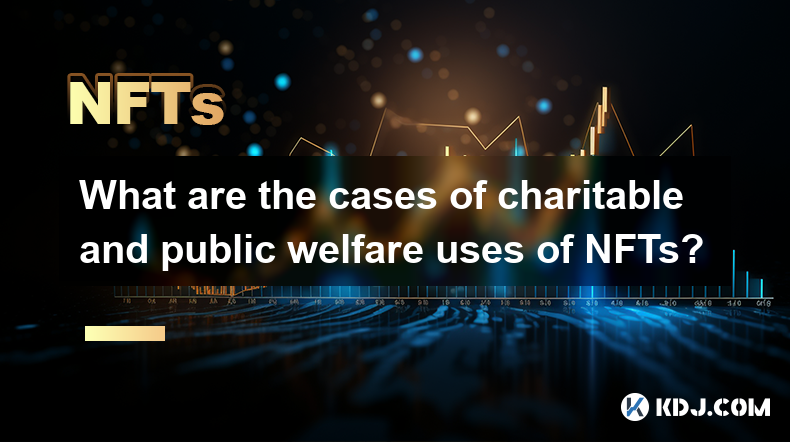
What are the Cases of Charitable and Public Welfare Uses of NFTs?
Key Points:
- NFTs' unique properties, such as verifiable scarcity and provenance, offer novel opportunities for charitable giving and public welfare initiatives.
- Direct donations, fundraising campaigns, fractionalized ownership, and community building are prominent use cases.
- Challenges include regulatory uncertainty, technological limitations, and the need for increased user education and accessibility.
- Successful implementations require careful planning, transparency, and community engagement.
- The future of NFT philanthropy hinges on addressing these challenges and leveraging emerging technologies to maximize impact.
Cases of Charitable and Public Welfare Uses of NFTs:
- Direct Donations of NFTs: Non-fungible tokens (NFTs) can be directly donated to charities as a form of fundraising. This approach leverages the growing popularity and value of NFTs within the crypto community. For instance, an artist could donate a unique piece of digital art as an NFT to a charity auction. The charity then either sells the NFT directly, generating funds, or holds onto it as a valuable asset to be sold at a later date or used for future fundraising initiatives. The transparent nature of the blockchain ensures the donation's authenticity and verifiability, providing donors with a sense of security and confidence in their contribution. The value of the NFT can fluctuate, introducing an element of risk, but this risk can be mitigated by choosing established, reputable projects and conducting thorough due diligence. Moreover, the donation itself can be used as a marketing tool for the charity, attracting attention from new donors and raising awareness about its cause. The novelty of donating NFTs might also appeal to younger demographics more accustomed to digital assets and online interactions, widening the charity's donor base. However, challenges remain. The volatility of the NFT market can impact the actual value received by the charity, and the technical knowledge required to receive and manage NFTs might be a barrier for some organizations. The lack of standardized processes for receiving and managing NFT donations also requires charities to adapt their existing infrastructure and develop new internal procedures. Finally, ensuring the security of the donated NFTs and preventing potential fraud requires careful consideration and robust security measures.
- NFT Fundraising Campaigns: Charities can launch dedicated fundraising campaigns centered around NFTs. These campaigns often involve creating and selling a limited collection of NFTs directly related to the charity's mission or cause. For example, an environmental charity might create a collection of NFTs depicting endangered species, with proceeds going directly towards conservation efforts. The limited supply of NFTs and the unique digital ownership they provide can incentivize purchases, potentially attracting both crypto enthusiasts and those unfamiliar with NFTs but supportive of the charity's work. A successful campaign requires careful planning, including the creation of compelling NFT artwork, a well-defined marketing strategy, and a transparent process for handling donations. The use of smart contracts can automate the donation process, enhancing efficiency and trust. The campaign's success also depends on the ability to reach the target audience and communicate effectively the value proposition of the NFTs and the impact of the donations. Choosing the right platform for selling the NFTs is also crucial, considering factors such as transaction fees, audience reach, and ease of use. Challenges include potential scalability issues if the campaign receives unexpectedly high demand, as well as the need to manage the expectations of donors regarding the long-term value of the NFTs. Furthermore, ensuring compliance with relevant regulations and tax laws related to NFT sales is vital for maintaining the integrity and legality of the campaign.
- Fractionalized Ownership of Assets through NFTs: High-value assets, like rare artwork or real estate, can be fractionalized into NFTs, allowing multiple individuals to collectively own a share. This enables charities to receive donations in the form of fractional ownership of these assets, offering a unique and potentially lucrative fundraising opportunity. For instance, a museum might fractionalize a valuable painting into NFTs, selling these fractions to raise funds for preservation or educational programs. This approach allows for broader participation in philanthropy, as smaller donations can collectively contribute to the acquisition or preservation of significant assets. The fractional ownership model introduces several complexities, however. The legal framework surrounding fractional ownership needs to be carefully considered to ensure compliance and protect the rights of all stakeholders. The management of the underlying asset and the distribution of any potential returns also require clear and transparent governance structures. The technical implementation of fractional ownership through NFTs also presents challenges, particularly in ensuring accurate tracking of ownership and seamless transfer of fractions. Moreover, the fluctuating value of the underlying asset and the potential for disputes among fractional owners necessitate robust mechanisms for dispute resolution. The marketing and communication surrounding the fractional ownership model are crucial for attracting potential donors and building trust in the process. Transparency and clear communication about the risks and rewards associated with fractional ownership are essential for ensuring a successful campaign.
- Community Building and Engagement: NFTs can be used to foster a sense of community and engagement among donors and supporters of a charity. For example, a charity might offer exclusive NFTs to donors who contribute above a certain threshold, granting them access to special events, merchandise, or voting rights within the organization. This approach leverages the social and collectibility aspects of NFTs to create a stronger connection between the charity and its supporters. It can also incentivize larger donations and cultivate a more loyal donor base. Building a strong community around the NFT initiative requires careful planning and engagement. Creating a vibrant online community where donors can interact with each other and the charity is crucial for fostering a sense of belonging and shared purpose. The use of social media and other online platforms can facilitate community building. However, effective community management is essential to ensure a positive and productive environment. Addressing concerns and feedback from the community is also crucial for maintaining trust and transparency. Furthermore, balancing the needs of the community with the operational needs of the charity requires careful consideration. The long-term sustainability of the community and its engagement with the charity needs to be strategically planned. Finally, it is important to recognize that not all charities will benefit from an NFT-based community approach, and a careful assessment of the charity’s goals and audience is essential before implementing such a strategy.
FAQs:
Q: What are the legal and regulatory implications of using NFTs for charitable purposes?
A: The legal and regulatory landscape surrounding NFTs is still evolving. Charities need to ensure compliance with relevant laws concerning fundraising, tax regulations, and securities laws, depending on the specific use case and jurisdiction. Legal counsel specializing in blockchain and NFT technology is recommended to navigate this complex area.
Q: How can charities ensure the security of NFTs used for fundraising?
A: Charities should utilize secure wallets and platforms for managing NFTs. Implementing robust security measures, such as multi-signature wallets and two-factor authentication, is crucial. Regular security audits and updates are also necessary to mitigate potential risks.
Q: What are the ethical considerations involved in using NFTs for charitable purposes?
A: Transparency and accountability are paramount. Charities need to clearly communicate how NFT proceeds will be used and provide regular updates on their impact. Avoiding misleading marketing practices and ensuring fair pricing are also vital ethical considerations.
Q: What are the potential downsides of using NFTs for charity?
A: The volatility of the NFT market poses a risk to the value of NFT donations. Technological limitations and the need for user education can hinder adoption. Scalability issues and high transaction fees can also pose challenges.
Q: How can charities effectively promote their NFT fundraising campaigns?
A: A multi-faceted approach is needed, combining social media marketing, collaborations with influencers, and partnerships with NFT marketplaces. Clearly articulating the charity's mission and the impact of donations is crucial. Building a strong online community around the campaign can also enhance its success.
Disclaimer:info@kdj.com
The information provided is not trading advice. kdj.com does not assume any responsibility for any investments made based on the information provided in this article. Cryptocurrencies are highly volatile and it is highly recommended that you invest with caution after thorough research!
If you believe that the content used on this website infringes your copyright, please contact us immediately (info@kdj.com) and we will delete it promptly.
- "Cardano (ADA) Price Could Dip Below $0.60, Following Previous Market Cycle"
- 2025-04-09 05:10:12
- BONK, the well-known meme coin, has risen over 35% in the last week, attracting meme coin investors in the market. So, what caused this rally?
- 2025-04-09 05:10:12
- Bitcoin (BTC) Investors May Not Exactly Feel It, but BTC Has Been a Relatively Good Bet
- 2025-04-09 05:05:12
- Donald's Bitcoin (DONBTC) Could Turn Early Investors into Multi-Millionaires, Like Shiba Inu (SHIB) and Dogecoin (DOGE) Did
- 2025-04-09 05:05:12
- 6 Upcoming Kraken Listings That Could Be the Next Big Thing in Crypto
- 2025-04-09 05:00:13
- COTI Unveils New Privacy-Focused Blockchain to Reshape Web3 Transactions
- 2025-04-09 05:00:13
Related knowledge
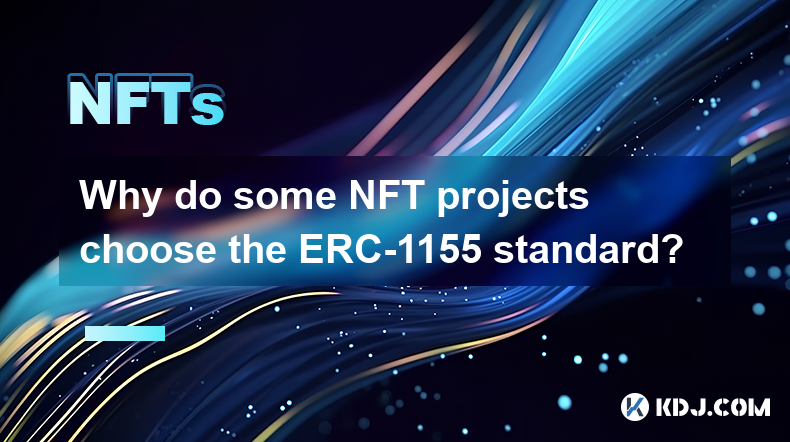
Why do some NFT projects choose the ERC-1155 standard?
Apr 08,2025 at 11:49am
The world of Non-Fungible Tokens (NFTs) has seen a significant rise in popularity and innovation, leading to the development of various token standards. Among these, the ERC-1155 standard has emerged as a versatile and efficient choice for many NFT projects. This article delves into the reasons why some NFT projects opt for the ERC-1155 standard, explor...
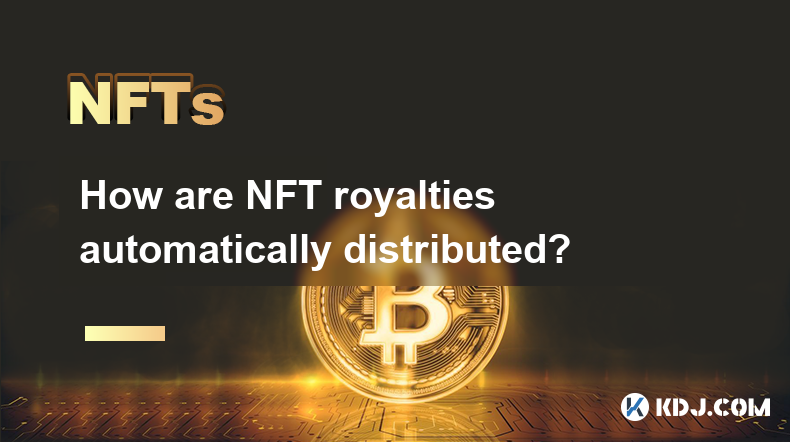
How are NFT royalties automatically distributed?
Apr 08,2025 at 08:14pm
NFTs, or Non-Fungible Tokens, have revolutionized the digital art and collectibles market by providing a way to prove ownership and authenticity of digital assets. One of the most intriguing features of NFTs is the ability to automatically distribute royalties to creators whenever their work is resold. This article will delve into the mechanisms behind ...
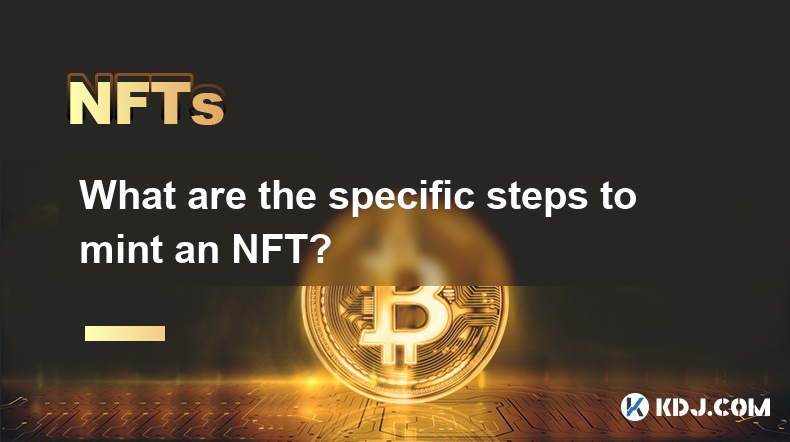
What are the specific steps to mint an NFT?
Apr 08,2025 at 05:22pm
Introduction to NFT MintingMinting an NFT, or Non-Fungible Token, involves creating a unique digital asset on a blockchain. This process allows artists, creators, and collectors to tokenize their work, ensuring its authenticity and ownership. Understanding the steps to mint an NFT is crucial for anyone looking to enter the world of digital collectibles....
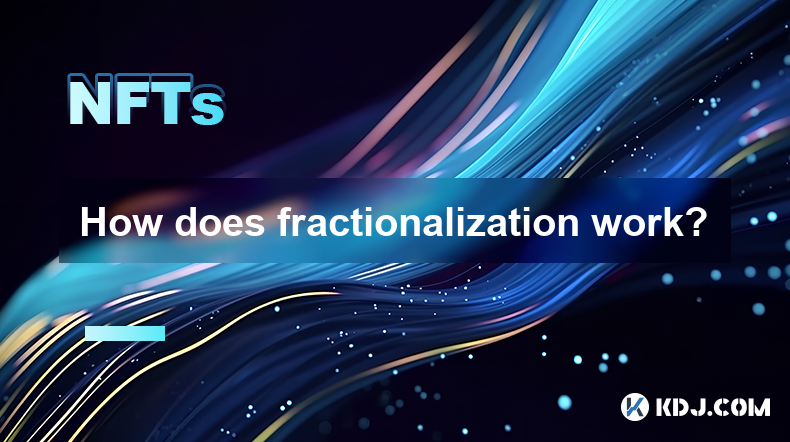
How does fractionalization work?
Apr 08,2025 at 07:42pm
How does fractionalization work? Fractionalization in the context of cryptocurrencies and blockchain technology refers to the process of dividing a single asset into smaller, more manageable pieces. This concept has revolutionized the way investors and users interact with high-value assets, making them more accessible and liquid. In this article, we wil...
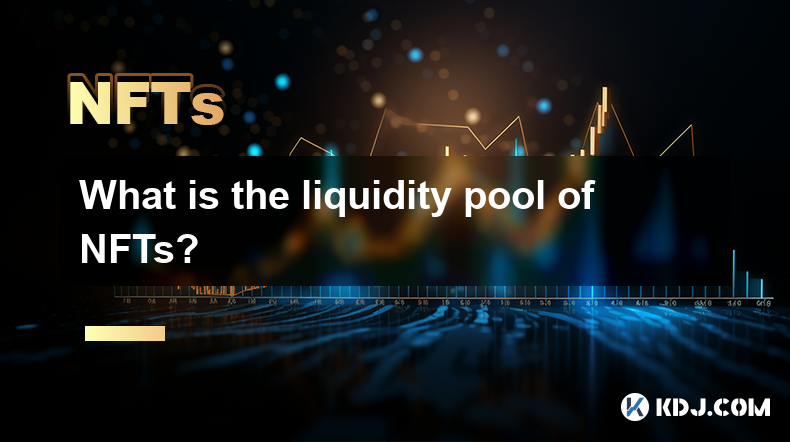
What is the liquidity pool of NFTs?
Apr 08,2025 at 05:35pm
The concept of liquidity pools has become increasingly popular within the cryptocurrency and decentralized finance (DeFi) ecosystems. While traditionally associated with token swaps, the idea has extended to the realm of Non-Fungible Tokens (NFTs). Liquidity pools for NFTs are mechanisms that facilitate the trading and exchange of these unique digital a...
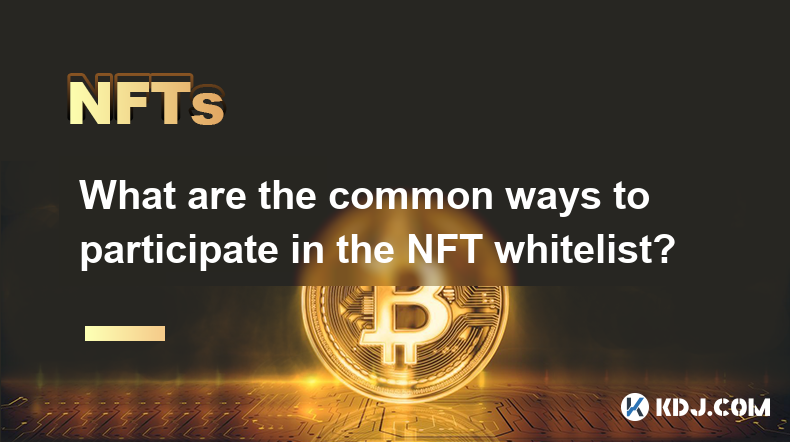
What are the common ways to participate in the NFT whitelist?
Apr 08,2025 at 08:28pm
Participating in an NFT whitelist can be an exciting opportunity for enthusiasts and investors looking to secure their spot in upcoming NFT drops. The whitelist often grants early access or special privileges, such as lower minting fees or guaranteed allocations. Here, we will explore the common ways to participate in an NFT whitelist, detailing each me...

Why do some NFT projects choose the ERC-1155 standard?
Apr 08,2025 at 11:49am
The world of Non-Fungible Tokens (NFTs) has seen a significant rise in popularity and innovation, leading to the development of various token standards. Among these, the ERC-1155 standard has emerged as a versatile and efficient choice for many NFT projects. This article delves into the reasons why some NFT projects opt for the ERC-1155 standard, explor...

How are NFT royalties automatically distributed?
Apr 08,2025 at 08:14pm
NFTs, or Non-Fungible Tokens, have revolutionized the digital art and collectibles market by providing a way to prove ownership and authenticity of digital assets. One of the most intriguing features of NFTs is the ability to automatically distribute royalties to creators whenever their work is resold. This article will delve into the mechanisms behind ...

What are the specific steps to mint an NFT?
Apr 08,2025 at 05:22pm
Introduction to NFT MintingMinting an NFT, or Non-Fungible Token, involves creating a unique digital asset on a blockchain. This process allows artists, creators, and collectors to tokenize their work, ensuring its authenticity and ownership. Understanding the steps to mint an NFT is crucial for anyone looking to enter the world of digital collectibles....

How does fractionalization work?
Apr 08,2025 at 07:42pm
How does fractionalization work? Fractionalization in the context of cryptocurrencies and blockchain technology refers to the process of dividing a single asset into smaller, more manageable pieces. This concept has revolutionized the way investors and users interact with high-value assets, making them more accessible and liquid. In this article, we wil...

What is the liquidity pool of NFTs?
Apr 08,2025 at 05:35pm
The concept of liquidity pools has become increasingly popular within the cryptocurrency and decentralized finance (DeFi) ecosystems. While traditionally associated with token swaps, the idea has extended to the realm of Non-Fungible Tokens (NFTs). Liquidity pools for NFTs are mechanisms that facilitate the trading and exchange of these unique digital a...

What are the common ways to participate in the NFT whitelist?
Apr 08,2025 at 08:28pm
Participating in an NFT whitelist can be an exciting opportunity for enthusiasts and investors looking to secure their spot in upcoming NFT drops. The whitelist often grants early access or special privileges, such as lower minting fees or guaranteed allocations. Here, we will explore the common ways to participate in an NFT whitelist, detailing each me...
See all articles






















































































